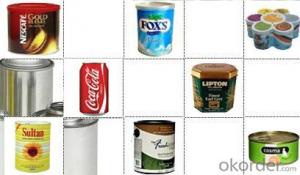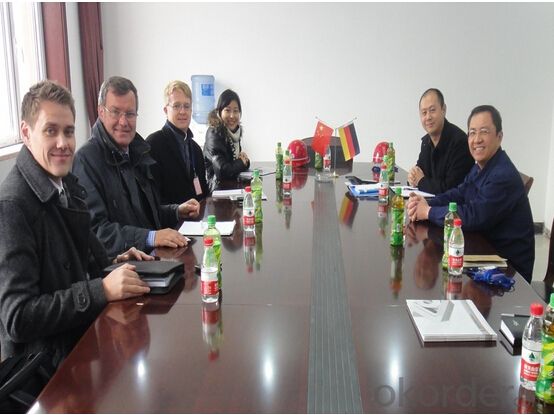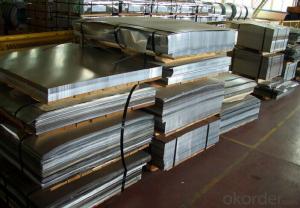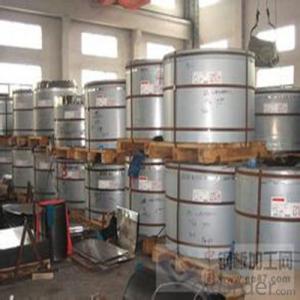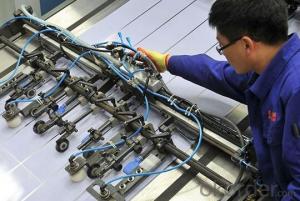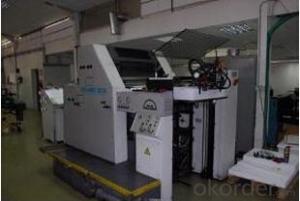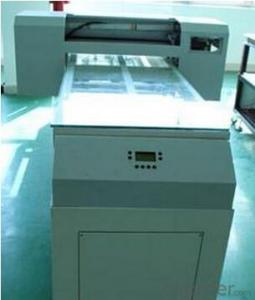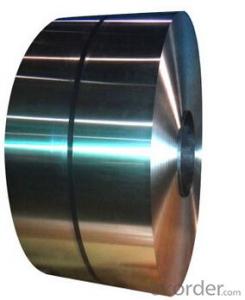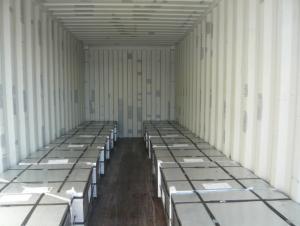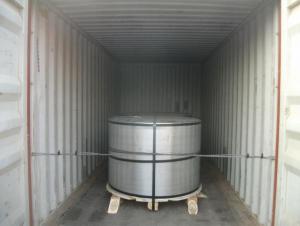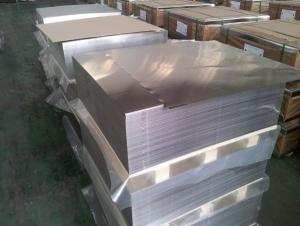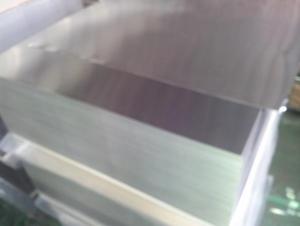Tinplate Used for Metal Cans in Packaging Industry
- Loading Port:
- China main port
- Payment Terms:
- TT OR LC
- Min Order Qty:
- 25 m.t.
- Supply Capability:
- 30000 m.t./month
OKorder Service Pledge
OKorder Financial Service
You Might Also Like
1. Products: Tin Free Steel
Tinplate and TFS are widely used for making all types of containers such as artistic cans, tea cans, painting cans, chemical package cans and metal printing etc. Its applications are not limited to containers; recently, they have also been used for making electrical machinery parts and many other products.
2. Specification:
Our goods enjoyed high quality both at home and abroad. We can supply tin free steel as follows:
Technical standard | JISG3315 and GB/T24180 - 2009 (BS EN 10202:1990) |
Steel Type | MR / SPCC |
Thickness | From 0.15mm to 0.50mm (Tolerance +/- 0.01mm) |
Width | Normally 600-1050mm (Tolerance +3/-0 mm) |
Coating | Total chromium min 30mg/m2 max 140mg/m2 |
Temper & Annealing | T1-T5, DR7-8, TS230-TH435, T49-T65(+/- 4) |
Surface Treatment | Bright & Fine Stone & Stone & Silver & Matt |
Payment terms | Letter of Credit (L/C), Telegraphic transfer (T/T) |
Price terms | CFR & CIF price term |
Delivery time | Within 60 days after received L/C or T/T down payment |
Packing | High quality shipping packing which contains thin plastic film, rust-proof paper, metal cover, metal angles and strap sand pallet. |
Minimum order Quantity(MOQ) | 25 metric tons (1X 20'' container) |
3. Pictures:
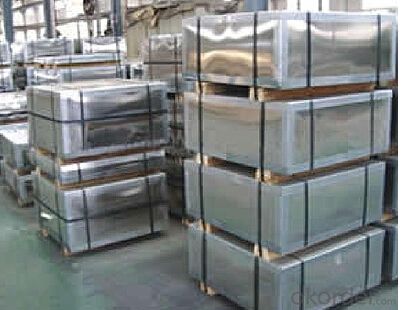
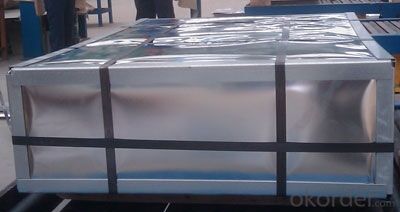
4. Features of the factory price/ tin free steel/tinplate/tfs/tmbp/etp/spte:
Beautiful Appearance
Excellent Paintability & Printability
Excellent Formability & Strength
Excellent Corrosion Resistance
Excellent Solderability & Weldability
5. FAQ:
We are one of the main producers in China for tinplate, tin free steel and also TMBP. At present, our productivity is more than 450000 MT/year.
For more information about our products or company, pls contact us freely.
- Q: How is tinplate coated with polymer films?
- Tinplate is coated with polymer films through a process called lamination. This involves applying a layer of polymer film onto the surface of the tinplate using heat and pressure. The polymer film adheres to the tinplate, providing a protective barrier against corrosion and enhancing its durability.
- Q: How does tinplate contribute to the presentation of jewelry?
- Tinplate is commonly used for jewelry packaging due to its durability, versatility, and aesthetic appeal. Its smooth and shiny surface provides an attractive backdrop that enhances the visual presentation of jewelry. Additionally, tinplate can be easily shaped into various forms, allowing for unique and eye-catching packaging designs that effectively showcase the beauty and elegance of the jewelry inside. The use of tinplate also adds a touch of sophistication and luxury to the overall presentation, making it an ideal choice for premium and high-end jewelry brands.
- Q: What are the advantages of using tinplate for pharmaceutical packaging?
- There are several advantages of using tinplate for pharmaceutical packaging. Firstly, tinplate is highly resistant to corrosion, ensuring the integrity and safety of the pharmaceutical products. Secondly, tinplate provides excellent barrier properties, protecting the contents from moisture, light, and oxygen, which can degrade the quality and efficacy of medications. Additionally, tinplate is sturdy and durable, providing adequate protection during transportation and storage. Finally, tinplate is easily recyclable, making it an environmentally friendly choice for pharmaceutical packaging.
- Q: How is tinplate used in the manufacturing of electrical components?
- Tinplate is commonly used in the manufacturing of electrical components as it provides a protective coating that prevents corrosion and enhances durability. It is often used to make casings, enclosures, and connectors for various electrical devices, ensuring efficient and reliable functioning of the components.
- Q: What are the environmental impacts of producing tinplate?
- The environmental impacts of producing tinplate include the extraction of raw materials, such as tin and steel, which can lead to habitat destruction and soil erosion. The manufacturing process involves high energy consumption and emissions of greenhouse gases, contributing to climate change. Waste generation, such as water pollution and hazardous byproducts, can also pose risks to ecosystems and human health. Additionally, the transportation and disposal of tinplate products may further contribute to carbon emissions and waste management challenges.
- Q: Can tinplate be shielded?
- Two kinds of materials of tinplate and paktong in general: tinplate is cheaper, weldability is good, but easy to rust, and relatively soft, compared to a large shield narrow cover will have problems. Alpaka relatively high prices, the weldability is poor, but can provide performance through tin, relativelyhard. At present, the use of shielding in the mobile phone, these two materials are more, but taking into account the cost or priority of tinplate
- Q: What are the main manufacturers of tinplate?
- The main manufacturers of tinplate include companies like ArcelorMittal, Tata Steel, Thyssenkrupp, Nippon Steel Corporation, and JFE Steel Corporation.
- Q: What is the global demand for tinplate?
- The global demand for tinplate is significant and steadily increasing. Tinplate is widely used in the packaging industry, particularly for food and beverage cans, due to its excellent corrosion resistance and ability to maintain product freshness. Additionally, the growing popularity of canned food, beverages, and other consumer goods across various regions has further fueled the demand for tinplate worldwide.
- Q: What are the main differences between tinplate and tinplate laminates?
- The main differences between tinplate and tinplate laminates lie in their composition and functionality. Tinplate is a steel sheet coated with a thin layer of tin, providing excellent corrosion resistance and a shiny appearance. On the other hand, tinplate laminates consist of a layer of tinplate combined with other materials like paper, plastic, or film. These laminates offer enhanced properties such as improved barrier protection, flexibility, and customization options for specific packaging needs. Overall, tinplate laminates offer a wider range of applications and versatility compared to traditional tinplate.
- Q: Can tinplate be used in extreme temperatures?
- Yes, tinplate can be used in extreme temperatures. Tinplate is known for its excellent heat resistance properties, making it suitable for applications in extreme temperatures. The tin coating on the steel substrate provides protection against corrosion and helps maintain the structural integrity of the tinplate even in high or low temperature environments.
Send your message to us
Tinplate Used for Metal Cans in Packaging Industry
- Loading Port:
- China main port
- Payment Terms:
- TT OR LC
- Min Order Qty:
- 25 m.t.
- Supply Capability:
- 30000 m.t./month
OKorder Service Pledge
OKorder Financial Service
Similar products
Hot products
Hot Searches
Related keywords
